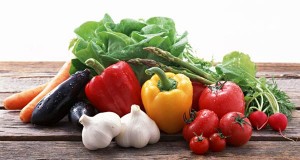
BLOG
Spring Cleaning
Ritual is not only for the High Days. We have smaller life rituals that we perform each and every day: the ritual of brushing our teeth, the ritual of getting dressed, etc. With Ostara and Spring just around the corner, I thought it was time for some “Spring Cleaning” which, as with all things, is best done mindfully.
I love to clean, so there’s no issue for me there, but if you are not a fan of scrubbing things down and tidying up, maybe doing so mindfully will help you to achieve a greater sense of accomplishment and comfort.
The ritual of Spring Cleaning has existed since the dawn of time. In North America, it is typically done in response to the cold and wet climate we endure throughout winter. Traditionally, it would be a time to dust and air out the home, change the hay in bedding, and be rid of all things that accumulated in the home during the harsher months. Nowadays, it is mostly an excuse to give the house a good once-over and recycle things we no longer need.
So apart from the obvious aspects of cleaning, like removal of dust and debris, cleaning surfaces or carpets, and laundering things that may get forgotten, we should keep in mind a few things:
- Firstly, you must perform each task with a strong sense of intent. Focus your energy on removing not only the physical mess but the emotional and spiritual mess as well. Visualize your home filling with a bright light as you cleanse it.
- When performing a ritual, it is best not to use harsh chemicals, if they can be avoided. Try a natural brand or even making your own cleaning solution with vinegar, water and essential oils to give the house a fresh smell without the burning compounds. (Check out for DIY natural cleaning inspiration here, here, and here!)
- Clean from top to bottom and from the back of the house out the front door.
- Burn sage in order to cleanse and purify the air.
- Open your most Easterly windows to allow the energy of the sun to pour in.
Good luck, folks!
(Check out our “Spring Cleaning” post from 2015, including a “House Cleaning Ritual” document, here)
Magic Potion for Sickness
It is that time of year. We are all getting sick or have been sick. What are your favourite remedies? For me, I have my “Sick Tea”.
Whenever I am feeling under the weather, I mix up this “tea” and sip it back like there is no tomorrow. My “tea” consists of freshly grated ginger, two or three slices of lemon, and a big dollop of honey all mixed together with some nice hot water. I prefer this to conventional medicine… and why not?
Ginger is packed with antioxidants that help boost your immune system. It can also help with nausea, heartburn, and indigestion. We’re off to a good start!
Lemon is high in vitamin C —great for you overall, but particularly if you are feeling sick. Vitamin C is also an antioxidant, and helps the body form and maintain connective tissue, including bones, blood vessels, and skin. Lemon also helps to break up mucus when you are sick and can help reduce the inflammation of a sore throat.
Honey has been used for years to sooth sore and scratchy throats. It has antibacterial properties and the natural peroxides in honey act as disinfectants, which may help reduce inflammation and thereby pain.
Mix the three together and you’ve got yourself a powerful “Sick Tea”.
Good luck, cold sufferers!! *sniff sniff
Getting more out of your produce
With the failing dollar, I am sure you are all noticing your grocery bills going up steeply. I know I have. So, in an effort to reduce waste and get a little more out of my food budget, I started doing some research and came up with a few simple tips to best use produce:
- Pay attention to your fridge’s crisper drawers, which often feature clear humidity settings for fruits and vegetables. Be sure to separate and store your produce properly, as certain fruits and vegetables can cause others to spoil faster.
- It may sound a little gross, but avoid washing your produce right away. The added moisture can encourage rot.
- Buy Local! This may not be feasible for everyone, whether related to product affordability or location, but when possible locally grown produce is often better quality and generally has reduced transport time, so your food will last longer.
- Buy “young” food. If you don’t need to use it all right away, buying young produce and letting it mature a little will give you some extra time. Additionally, some younger foods hold more nutrition than their older counterparts, e.g. baby spinach.
- Don’t over prep. Pre-cut fruits and veggies, when exposed to oxygen for a day, lose 10-25% of their antioxidants, like vitamin c. It may be convenient to cut all your veg at once, but you are cheating yourself of nutrients and speeding up the degradation process.
- Fruits and vegetables are best eaten in their natural form. If you must cook, in order to get the best bang for your buck, do not over cook. Try methods such as steaming instead of boiling or nuking in the microwave.
- If you aren’t able to use all your produce fast enough, freeze it. I know it doesn’t always sound like the most appealing solution, but it is definitely better than letting good food go to waste. If done properly and while your produce is still fresh, the produce will also retain most of it’s nutrients.
- Juicing at home? Juice only what you need. I know it can be tempting to juice extra, but research shows you get the best bang for your buck when you drink it right away.
Those are just some general tips. If you are looking for more specific information, I am rounded up some great links to get you rolling (below). Remember: waste not – want not.
http://www.thekitchn.com/the-kitchns-guide-to-storing-fruits-and-vegetables-tip-roundup-176308
http://www.thekitchn.com/seize-the-season-freezing-fresh-vegetables-171376
https://s-media-cache-ak0.pinimg.com/236x/87/2c/a5/872ca52aa5fdace2ea98854920b094fd.jpg
http://cleangreensimple.com/2011/05/storing-food-and-produce/



